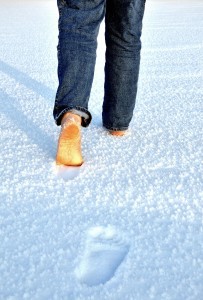Often when caregiving is at its most physically and emotionally intense levels, there comes a time in every caregiver’s journey when the ability to “keep calm and carry on” becomes an insurmountable challenge.
Following are the most common caregiver tipping points – they typically fall into three areas: physical challenges, safety challenges and behavioral challenges which all affect the caregiver’s own health and wellness.
Physical Challenges
1. Help walking and lifting
When a parent, spouse or other loved one becomes physically unable to walk without help of a cane, walker and especially if they are in a wheelchair, lifting and transferring becomes a physical challenge for the caregiver. For instance, a wife weighing 120 pounds trying to lift the dead weight of a husband who weighs 200 pounds into and out of bed, wheelchair or a car can result in shoulder, neck or back injury for the caregiver and a possible harmful fall for the spouse.
AgingCare reports 52 percent of musculoskeletal caregiver injuries occur when lifting or transferring. Being trained on a proper lifting technique and avoiding twisting, stooping and bending positions are critical for the caregiver. Think like a weightlifter – always bend the knees, keep the back straight, ensure you have a firm grip on your loved one and let the leg muscles do most of the work. Alternatively, engaging the help of a stronger family member, friend or home health aide often becomes essential for the health of both the care recipient and caregiver.
2. Incontinence
One of the toughest tasks for caregivers is cleaning and changing the diaper of a loved one who has the inability to control bladder and bowel movements. Often an overactive bladder creates a frequency to urinate and accidents happen because the person is not mobile due to hip or knee surgery or is physically unable to get quickly to the bathroom. It can also be tied to neurological disorders such as Parkinson’s or dementia or other health issues such as diabetes, Crohn’s disease, multiple sclerosis or prostate cancer. Alzheimer’s patients sometimes forget to follow regular toileting schedules or don’t remember where the bathroom is located resulting in spontaneous accidents. People who suffer from incontinence are often humiliated by the accidents and embarrassed by the adult diapers required to help with the problem.
“We know 23 million men and one out of every two women over the age of 50 suffer from some type of bladder leakage to more intense incontinence issues,” says Liz Metz, brand director for Depend North America, one of the leading makers of adult diapers. “The social stigma associated with incontinence is one of the issues our latest brand campaign is trying to overcome – this is just another area of our lives where we have to adapt to aging.”
The Depend advertising campaign features celebrities such as actors Harry Hamlin and Lisa Rinna on a red carpet, Cheryl Burke, a professional dancer on “Dancing with the Stars,” and NFL football players Clay Matthews of the Green Bay Packers and Demarcus Ware of the Dallas Cowboys trying on briefs which are stylish and comfortable yet control small bladder leakage to larger incontinence problems.
A resource for caregivers facing this challenge is The CareGiver Partnership, an online shopping and information site featuring an extensive offering of more than 400 products and discounts where caregivers can also request samples to test before they buy product in bulk. The site also includes comprehensive information for caregivers about incontinence issues and free telephonic customer service support from actual family caregivers who understand the issue.
Safety Challenges
1. Falls
According to the CDC, every 28 minutes a senior dies from injuries from falling and 2 million older Americans are treated in ERs every year from falling at home. Preventing fall risk is crucial for both caregivers and their loved ones.
In your loved one’s home or living environment, clear pathways for easy access and mobility, remove rugs and other obstacles that may trip a loved one who cannot lift feet or is using a cane or walker, install sturdy horizontal and vertical grab bars in showers and baths. Consider moving a master bedroom from upper floors to the ground floor to avoid stairs. Also, have a loved one’s eyes checked on a regular basis, often vision problems can result in falls and understand certain medications may make a loved one dizzy or disoriented – always ask the doctor of the side effects of new medications.
Caregivers who do not live with their loved one or cannot be vigilant 24/7 should consider some of the latest technology to help prevent falls or alert caregivers in case of a fall. Products such as 5Star Urgent Response device or smartphone service from Great Call which provides GPS-enabled direct 9-1-1 help, CareLine Home Safety Telephone System from VTech or Philips Lifeline products allow caregivers to have peace of mind their loved one will receive fast response in case of a fall or other safety problem.
2. Wandering
Most typically associated with Alzheimer’s disease and dementia, a loved one who has a tendency to wander is a serious safety issue. Six out of 10 of those with Alzheimer’s have a tendency to wander which can become a risk for death when a loved one wanders in inclement weather and is not quickly found.
Dr. Sally Brooks, vice president of physician and medical development for Kindred Healthcare, who cares for elderly parents, had a scare with her father who suffers with dementia. After her father wandered from the family home a few times and was found by local police, it became essential to find a facility that could accommodate her mother’s chronic depression and limited mobility and help keep her father safe from wandering. However, the assisted living facility Dr. Brooks found for her parents had a hiccup in safety when it comes to her father’s wandering tendency.
“One day my dad left the facility unsupervised,” remembers Dr. Brooks. “He had his hat and coat on and started a conversation with a doctor in the hallway who thought he was a visitor. The doctor allowed my dad on the elevator as they chatted and my dad walked right out the front door of the facility.”
Fortunately, her dad was found but the potential for harm still existed. “I realized that even though I had difficulty managing dad’s wandering issue on my own, I had to remain vigilant with the assisted living staff to ensure they monitored him properly to avoid any future incidents,” says Dr. Brooks. “Even in a secure setting like the assisted living facility, my role as caregiver remains being the person who ensures my parent’s safety through good communication and frequent check-ins with my parents and staff.”
Caregivers of loved ones who wander but want to keep them home and safe can also find help through technology. The Alzheimer’s Associations offers both Medic+Alert Safe Return and Comfort Zone GPS tracking for those with early on-set or advanced dementia.
Behavioral Challenges
1. Aggressive behavior
Whether it is the paranoia and outbursts associated with sundowning of a loved one with Alzheimer’s or a spouse or parent who has been hurtful or emotionally controlling in the past, managing the emotional strain of caregiving is hard but emotional or physical abuse can become a tipping point for most caregivers.
Many caregivers feel obligated to care for an abusive spouse or parent because they have spent a lifetime coping with the situation. They feel guilt over their loved one now needing their help because of an illness or other health issue but this is an environment where a caregiver’s own health and wellness is at risk. Often seen with those with certain mental health issues or with veterans who suffer from post-traumatic stress disorder (PTSD), several studies show 50 percent of PTSD veterans commit spousal or family abuse.
Finding support groups where caregivers can share openly with others who many experience similar issues is one of the best avenues for caregivers getting the help they need to make decisions about their loved one’s care.
“Caregivers have to get over the guilt of not wanting to care for someone who is hurting them emotionally or physically,” says Dr. Diane Denholm, author of The Caregiving Wife’s Handbook. “An abusive relationship will only get worse when caregiving is needed. Caregivers have to remember – safety is paramount – both the safety of their loved one and their own safety.”
2. Failure to communicate
It might be a stroke or Alzheimer’s or result of surgery from throat, lip or other cancer which makes communication difficult and becomes a possible tipping point for caregivers to continue to provide adequate care.
“For the 15 million Americans who care for a loved one with Alzheimer’s, we have to become detectives in looking for clues in behavioral changes and adapting our communication style,” says Ruth Drew, director of family and information services for the Alzheimer’s Association.
Drew explains those with Alzheimer’s often feel fearful which can lead to agitation, frustration, confusion and depression. If a loved one becomes combative or physically distressed, caregivers should check to see if there is a bed sore, wound or other health issue causing the problem. Also, understanding distractions such as the new face of an in-home care worker or younger boisterous children can cause agitation. She recommends caregivers seek expert advice, such as the support programs found through the Alzheimer’s Association which provide online and telephonic lifelines to caregivers who are struggling.
“If we could see the world through their eyes we would recognize there is a reason to their distress, but all caregivers can do is try to read the cues and go with the flow,” says Drew. “Caregivers also have to realize they cannot do this alone. Everyone has a different threshold for what they can and cannot do so don’t judge yourself by others or have guilt over why you’re struggling more than someone else did.”
©2015 Sherri Snelling








0 Comments